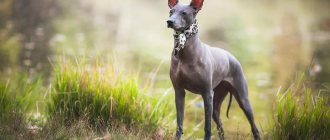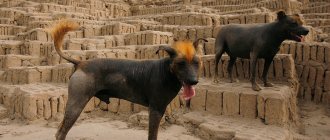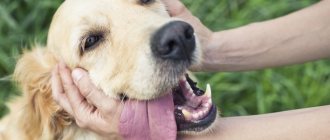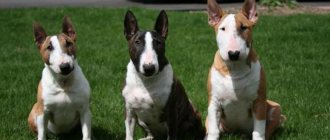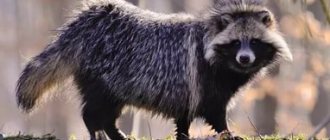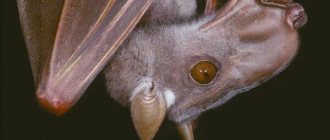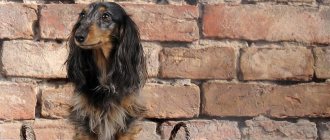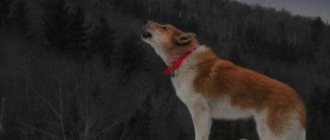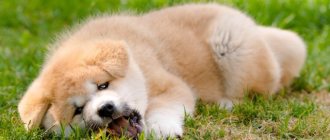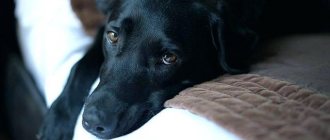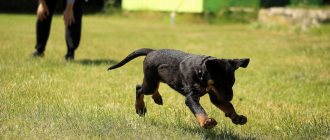Breed characteristics
| Short description | |
| Origin: | Mexico |
| Conditions of detention: | Apartment, house |
| Purpose: | Companion dog, guard dog |
| Color: | Brown, black, brindle, bronze |
| Wool length: | Complete or partial absence of hair, short, close-lying hair |
| Adult dog size: | Height:
Weight: 4-20 kg |
| Average life expectancy: | 12-15 years |
| Walk: | Mandatory two-time walk |
| Physical activity needs: | Average physical activity needs (1-1.5 hours of daily walks and games) |
| Fédération Cynologique Internationale (FIC) classification: | Group 5: Spitz and primitive breeds; Section 6: primitive rocks |
| Puppy price: | From 8 to 150 thousand rubles. Without pedigree - 3-10 thousand rubles, pet class - 20-35 thousand rubles, breed class - up to 100 thousand rubles, show class - 130 thousand rubles and above |
Top nicknames
Due to the graceful appearance of the Xolo, soft, sonorous and short nicknames are suitable. You can consult a list of Mexican or Spanish names. It is important that the dog reacts positively to its nickname, so you should call your pet by it with praise, approval, and friendly “conversation.” It is best to avoid calling your name during punishment. The list of name options for Sholo is given in the table.
Table - Pet names
| Nicknames for Xoloitzcuintle “boy” | Nicknames for Xoloitzcuintle “girls” |
| — Miguel; — Diego; — Sebastian; — Migo; — Count; — Nestor; — Ricky; — Vasco; — Carlos; — Oscar | — Olivia; — Hannah; - And I; - Haze; — Zara; — Pilar; - Naida; — Carla; — Martha; — Trini |
History of the origin of the species
The record-breaking dog, Xolo, is a breed included in the Guinness Book of Records as the oldest and most indigenous breed. This means that the animals developed independently, without the intervention of breeders. There was a strict natural selection, during which only the strongest remained. Thanks to this development, Xolos are rewarded with almost impeccable health.
The name of the breed is closely related to the Aztec culture . In translation, Xoloitzcuintle is a messenger or dog of the god Xolotl (Xolotl), who rules the afterlife and the souls of the dead. That is why animals were considered conductors between the real and divine worlds. Pets were ritualistic, their figurines decorated temples, and the figurines were placed in the graves of the dead. One of the rituals involved killing and eating a dog. The Aztecs believed that Xolo could cure ailments.
According to archaeologists, the dog came to the continent along with British colonialists from the Coastal Strait. Lack of hair is a genetic mutation that did not harm the body and developed into a separate species.
During the existence of the Spanish invaders and their colonies, the Xolos were brutally destroyed. The Spanish government needed this to eradicate pagan culture and glorify Christianity. But the breed was preserved in remote villages.
In the 19th and 20th centuries, animals were popular among artists, the rich and the nobility. Frida Kahlo and her husband Diego Rivera even ran a small kennel and bred hairless Mexican dogs. In 1956, the Xoloitzcuintle was recognized in Mexico and spread throughout the world.
Now dogs are especially revered in their homeland; festivals and celebrations are held in their honor. And in 2022, the cartoon “The Secret of Coco” was released, where the Mexican naked became a symbol of devotion.
Hairless Deerhound
The dog appeared by chance as a result of a gene mutation in Scottish greyhounds. That is why it was not recognized by any dog handlers association. The cause of Scottish greyhound puppies losing their fur is a recessive gene that mutates in them at about 3 weeks.
It cannot be said that this is due to their diseases or pathologies of their parents, however, professional breeders of greyhound dogs cull such individuals from the litter. But there were enthusiasts who began to breed them. The Hairless Deerhound cannot hunt like its cousin, the Scottish Greyhound.
The reason is the lack of insulating and protective fur. The dog gets badly sunburned. Moreover, branches and sharp stones that she may come into contact with while hunting can seriously damage her delicate skin. Therefore, as a hunter, this large hairless dog is completely useless.
Breed standard:
- Height at withers – 60-70 cm.
- Weight – up to 35 kg.
- Body type – dryish, lean.
- Limbs – long, slender.
- The tail is thin.
- Skin color – gray, light brown.
The naked deerhound has one more significant drawback - poor health. However, the dog has a wonderful character. He is good-natured, non-conflicting, sociable and gentle. Strives to be friends with everyone. Loves affection and shows it independently. That is why it is valued not only in Scotland, but also in England, where greyhound hunters are revered.
Interesting! It is impossible to buy a hairless deerhound. Scottish greyhound puppies found to have a recessive gene are abandoned in kennels.
Distinctive features
The breed is often confused with the Chinese Crested. The animals are really similar: lean, dry body, absence (full or partial) of hair, long limbs, lean belly, sharp muzzle. Xolo has three height variations: mini (25-35 cm at the withers), medium or dwarf (36-45 cm), standard (46-60 cm). Depending on its height, a dog can weigh from 4 to 20 kg.
- The head is narrow, medium-sized, wedge-shaped with a flat forehead and a rounded crown, the stop is clearly expressed.
- The muzzle is proportional to the size of the head, the cheeks are flat, the bridge of the nose is straight, the lips are well pigmented and fit tightly to the jaws. Scissor bite The jaw bones are strong, but not wide.
- The nose is large and rectangular. The color depends on the color of the skin.
- The eyes are set high and wide, medium-sized, almond-shaped. Preferred dark iris color;
- The ears are set high, large, pointed;
- The body is elongated, elegant, strong. The topline is curved, the loin is convex, the croup is sloping. The chest is of medium volume, the stomach is lean.
- The tail is long and mobile. In a calm state it hangs down and reaches the hock joint, in an active state it rises above the lumbar line. Thick at the base, tapering towards the end.
- The limbs are straight and parallel, thin but muscular. The paws are elongated, similar to those of a hare.
- The coat is completely absent; there may be patches of fur on the scruff of the neck, tip of the tail and back of the limbs. The hair is thin, fluffy, of medium length. The skin is elastic and gathers in folds only on the muzzle.
- Color : brown, black, brindle, bronze.
Chinese Crested Dog
This is a very ancient Chinese breed of hairless dog , which appeared more than 2500 years ago. All over the world it is treated as exotic. In Ancient China it was considered sacred. People believed that the owners of such dogs were blessed by the Lord himself. She has a pleasant character. Not aggressive at all. He is sensitive and understanding.
The hairless dog with a tuft is artistic and charming. She loves attention, but at the same time, she extremely rarely obsessively begs for people's favor. She stays warm only with those who openly express their sympathy for her. Rude people irritate a slightly proud dog, so she tries to avoid them.
Breed standard:
- Height – from 27 to 33 cm.
- Weight – from 5 to 6.5 kg.
- The coat is on the head, ears and tips of the paws. It is extremely rare for Chinese Cresteds to be born with fur on their back or chest.
- Harmonious physique.
- Thin long tail.
- The color varies, from pure white to black with spots.
There are 2 types of Chinese Crested breed - downy and hairless. Individuals of the second pita are more sensitive to cold, since they have fur only on some parts of the body. Their skin should be cared for regularly. She shouldn't get sunburned. The “puff” also needs to be looked after. Bald areas on her body should be treated with sunscreen in hot weather.
Note to Chinese Crested owners! These charming and beautiful dogs are very sensual and gentle. They are in great need of human care and love, so they should not be ignored or left alone for a long time.
Photo of an adult dog
Photo review
Xolo is a photogenic dog that inspires admiration. Elegance is in harmony with powerful, “masculine” breasts, “cute” ears - with a serious and attentive look. Photos of Xoloitzcuintle puppies and dogs make you fall in love with these pets at first sight.
Photos of puppies
Cost and where to buy
The Xolo dog appeared in Russia and the CIS not so long ago, therefore it is still considered a rare, rather expensive breed. It should be borne in mind that the cost of a Xoloitzcuintle puppy consists of the maintenance of its mother, origin and care in the first months of life. Therefore, too low a price for a puppy should alert you. You can only get a non-standard abandoned puppy for free or at a minimal cost. You will have to pay a significant amount for a purebred rejected dog.
If love and care are stronger than titles and awards, you can take a “defective” baby. On average, a Xolo costs between 15-40 thousand rubles, future champions are sold for 80-150 thousand rubles (data as of January 2022).
Nurseries
Before purchasing, it is important to choose a professional Xoloitzcuintle breed nursery. Owners with a positive reputation will not sell a “pig in a poke.” For them, each puppy is a separate and special “child”. When selling, the dog is provided with a chip, a brand, and all the necessary documents indicating vaccinations, pedigree, and deficiencies. It is also necessary to conclude a purchase and sale agreement.
It should be remembered that purchasing a puppy is a risk not only for future owners, but also for breeders. Therefore, as a rule, throughout the growth and development of the pet, communication is maintained on both sides. Breeders must provide all information about the nursery, leave a phone number and ask future owners about the conditions of detention, accommodation, and daily routine. In case of poor treatment and care, the breeder has the right to return the dog to the kennel.
You can buy Xolo in nurseries that qualify for this breed:
- “Kinich Ahau” in Moscow - https://www.kinich-ahau.ru/;
- “Tekuani” in Voskresensk (MO) - https://tecuani.ru/contacts.html;
- “Livelong Hit” in the Moscow region - https://livelonghit.jimdo.com/;
- "Limanner Grand" in St. Petersburg - https://www.limanner.com/limanner/;
- “Xolomania Kennel” in St. Petersburg - https://xolomania.ru/;
- “Nu Art” in Chelyabinsk - https://nju-art.jimdo.com/;
- "Naf-Naf" in Barnaul - https://www. xoloitzcuintle.narod.ru/;
- "Kantepek" in Minsk - https://nataly-kisel.narod.ru/.
Clear almond-shaped eyes matching the color of the coat or skin, a wide chest, a narrow muzzle, an elongated neck, elegant long legs with protruding toes are the striking features of the Xoloitzcuintle breed. The Mexican beauty requires patient training, love and simple care. In return, the dog will give adoration, devotion and cheerfulness to its owner.
Video on the topic: Xoloitzcuintle - Mexican Hairless Dog
Features of character and behavior
In fact, the breed is intended for security service. Tall individuals are often used precisely for these purposes. But now Mexican Nakeds often act as companions and family friends. They are distrustful of strangers and can be aggressive towards other dogs, but they love and value their owners.
Advantages
- The breed is active and playful. Dogs love to spend time with their family, quickly become attached to people, and adapt to their owner’s mood. Contact with the owner is important for them, because in ancient times they directly depended on human will.
- Xoloitzcuintles get along well with children and the elderly ; the animals are not intrusive and do not require constant training. Gets along well with other animals, provided that they are properly socialized.
- Pets are smart, quickly respond to commands, and are easy to train. They are happy to constantly follow their owner, accompany him on trips, and give him positivity.
Flaws
- Indeed, a guard dog is distrustful of strangers, can show aggression, bark loudly, defending the territory. Therefore, Xolo, like no other, requires proper timely socialization.
- Pets tend to dominate, both within the family and with animals. They often get into fights to prove their superiority.
- Like all native breeds, Mexican Hairless are quite willful, so they can be stubborn. They often choose one leader in the family and listen only to him. To prevent this from happening, all members of the household should take turns taking care of the dog’s upbringing and hygiene.
Education and training
Along with positive character traits, Mexican Hairless dogs are distinguished by stubbornness and willfulness. It is necessary to accustom your pet to manners from puppyhood. Do this logically and gradually, using only positive parenting methods. With gentle and delicate handling, the Xoloitzcuintle will easily learn what his owner likes and what he doesn’t. A stern look is enough to stop pranks.
When you take a puppy into your home, be prepared to make him the center of your little universe. The pet needs constant communication, so you should not leave it alone. If your work schedule is quite busy, make sure you have a second pet that will not let your xolo get bored.
Remember: representatives of the breed need the firm hand of the owner. You should not treat the animal as an equal being: this will make it disobedient and even aggressive.
Mexican Hairless Dogs require early socialization. If possible, create a suitable atmosphere for your baby in which he can interact with other people and animals, perceive new sights and sounds, and gain experience. Dog handlers recommend inviting guests and taking your pet for walks in busy parks as often as possible so that the Xolo can develop and further improve social skills.
Training a Xoloitzcuintle is not difficult if you use a creative approach to the matter. The dog needs to be interested so that it agrees to learn new commands. If necessary, supplement the training process with private lessons from a professional. Do not stop training in the winter season, citing the animal’s lack of hair and the risk of catching a cold. Mexican Hairless dogs tolerate cold well with consistent hardening.
During training, you should not resort to physical punishment of your pet: the Xolo will get scared and completely refuse to follow the command. If the result is positive, be sure to reward the dog with a treat or affection. Noticing that you are satisfied, the animal will make every effort to please the owner again with its obedience.
Care and maintenance
The breed is a dream for those who do not have the opportunity or desire to deal with wool on carpets and furniture. Dogs do not need to be combed, bathed often, or monitor the condition of the coat. But caring for Xolo has its own nuances. First of all, this is sensitive skin. Animals are also very sensitive to poor quality or improper nutrition. It is important to maintain the desired temperature regime, not to overcool your pet or overheat.
Nutrition
It is important for animals like Xolo to choose their diet wisely, taking into account possible allergic reactions. It is believed that the most common problematic foods are corn, chicken, potatoes, sweets, cereals and grains. These are the ingredients you should avoid when choosing dry food.
When a puppy is purchased, the breeder offers to continue feeding the dog the same product that was fed at the kennel. If the owner wants to switch the pet to natural food or another brand, then you need to consult a veterinarian and make the transition smoothly, gradually mixing the new food into the usual one.
Ready-made products are now particularly popular among dog breeders. After all, it’s convenient to calculate them; you don’t need to bother with preparation. Also, the granules contain all the necessary vitamins. But this only applies to good super-premium food and holistic food. For Xolo, a hypoallergenic product with a low content of grains and cereals should be selected.
- Natural nutrition should consist of 30-50% protein : lean meat (except chicken and pork), eggs (2 times a week), fermented milk products (cottage cheese and kefir), river fish.
- Carbohydrates are also needed in the diet . Your pet can get them from complex cereals (rice, buckwheat) and vegetables (carrots, beets).
The number of meals depends on age. Up to 2 months the animal is fed 5-6 times , from 2 to 4 - 4-5 times , by the year the dog is transferred to twice feeding. Serving size is determined individually based on weight and daily activity.
Under no circumstances should the diet contain bones, fatty, smoked, fried foods, sweets and flour, hot and spicy foods. Food for the pet is prepared separately; Xolo cannot be fed from the table.
We recommend that you read a detailed article on the topic: “How and what to feed a dog: types and characteristics of nutrition.”
Health
Xolos are strong, hardy dogs with developed immunity and resistance to changes in the environment. Despite this, animals remain allergic and often suffer from dermatitis and other problems with the epidermis. They live 12-15 years . Like other pets, Mexican Hairless cats require vaccinations and annual checkups with a veterinarian.
Vaccinations
All dogs must be vaccinated against dangerous infectious diseases . Basic vaccinations are carried out annually. In the first year of life, the course of repetitions is the widest.
- The first vaccination is given to puppies at 2.5 months ; the injection contains inactive strains of canine distemper, enteritis, leptospirosis, and salmonellosis.
- Revaccination is carried out after 2 weeks, at 6 months, at 12 months.
- Repetition is carried out either annually or once every 2-3 years (depending on the drug).
- The rabies vaccination is given at 7 months and repeated every year .
This is especially important if the pet actively interacts with wild or stray animals. Without the necessary vaccinations and marks in the veterinary passport, the animal cannot be transported across the border.
2 weeks before vaccination, the dog is dewormed. Walking your pet before the procedure is prohibited. It is also important to undergo quarantine (14-21 days after). At this time, it is not recommended to communicate with other pets, treat with antibiotics or strong active substances. In case of an allergic reaction (vomiting, lethargy for more than 2 days, apathy, high temperature), you should contact a veterinarian.
Important article on the topic: “Everything you need to know about dog vaccinations.”
Diseases
Diseases characteristic of the breed:
- Gastritis and indigestion;
- Food poisoning;
- Allergic reactions;
- Dermatitis;
- Sunburn;
- Hypothermia and colds;
- Dental problems;
- Rashes and acne.
Despite the fact that pets are considered not problematic, their skin needs special careful care. Considered hypoallergenic, dogs often have allergies to certain foods. In general, problems can be avoided with proper care, feeding, and hygiene standards.
Walk
The breed is active and willful; pets love to go for long and fun walks. They do not need serious physical activity and constant training, but walking should be regular - 2 times a day for 1-1.5 hours. The dog needs to release its energy, meet other animals, and socialize properly.
From the age of 2-3 months, the pet is introduced to the street, shown various public places, transport, and dog parks. It is important to teach your puppy to be tolerant of his environment so that he does not react aggressively or timidly.
Xolos can be walked without a leash only if they are completely obedient. Despite the fact that the animal is devoted to its family, due to its natural curiosity, the pet can run away and get lost from sight.
Grooming
Since these dogs have no hair at all (or only some hair), they are easy to care for. Brush them with a soft brush once a week , wipe them with a damp cloth if they are heavily soiled. It is recommended to bathe no more than 2 times a year ; in winter this procedure is avoided.
It is important not to let your pet be in a draft. During the cold season and wet rainy weather, Xolo is dressed in special protective overalls. In sunny weather, moisturize the skin with sunscreen lotions to prevent burns.
Pets' teeth are brushed 2 times a week, and nails are trimmed as they grow. During the period of growth and formation of the ears, you need to ensure that they are positioned correctly. Often, owners have to fix the cartilage with adhesives.
Manchurian Hairless Dog
This hairless dog in the photo closely resembles a Chinese Crested. This is due to their close genetic relationship. The main advantage of such a pet is that it does not become infected with parasites. And it also does not have an unpleasant odor. The Manchurian Hairless dog is quite easy to care for. However, she needs the care of her owners. She has a kind and gentle nature.
Breed standard:
- Height at withers – from 25 to 33 cm.
- Weight – about 7 kg.
- The skin is thin and pink.
- Slim rectangular body type.
- Small head, long neck.
- Lush short hair on the ears, forehead and paws.
This dog is obedient, non-conflict, and very loyal. Can become withdrawn if growing up in an unfavorable psychological environment.
Mating
As with all dogs, there are optimal times for mating for Xolos. It is important to know that pets cannot be reduced until their 3rd heat, approximately 2-2.5 years. Males are allowed to breed at 25-30 months . By this age, animals are fully formed and can conceive and give birth to healthy offspring.
After the female starts estrus, you need to count 10-13 days. This period of time is ovulation. Then the girl appears in a playful mood, she accepts the male, the loop increases in size, and the discharge changes its color to light or light yellow.
Mating can be carried out on neutral territory or at the dog’s home. There the boy will feel relaxed. Pets are given 5-10 minutes to get acquainted. After the boy makes the cage, the animals need to be helped to find a comfortable position. Usually the girl is held by the head and under the belly, and the male is guided into the noose.
Read a detailed article on the topic: “Everything you need to know about breeding dogs: appropriate age, what to do if it doesn’t work out, rules and tips.”
The act lasts 10-15 minutes. The ideal ending would be a castle in which the dogs stand for 5-7 minutes . But pregnancy can happen even without a lock. Repeat mating after 48 hours to be on the safe side. After 2 weeks, the first signs of pregnancy may appear: toxicosis, restlessness, changes in behavior.
Varieties
There are two types of Xolo - completely hairless or with small tufts of hair on the head and short-haired. Humanity owes the appearance of the hairless breed to the spontaneous manifestation of the “hairless” gene. Such mutations are also observed in other animals - rats and cats. In a recessive state, the genes responsible for the undercoat remain, so a minority of puppies in the litter have fur.
In the genotype, the hair comes “complete” with the teeth, so hairless Xolos are born with the absence of premolars - molars. An incomplete set of incisors may also be observed. Wool pets must have all their teeth.
Otherwise, no differences are observed. The Xolo, with or without fur, has wide, cone-shaped ears that rise when excited. At the same time, folds gather on the muzzle. The rest of the body remains smooth and toned. Only small puppies have wrinkles all over their bodies.
The absence of frequent breathing and shortness of breath is a distinctive feature of the dog. Xolo sweats not only through his nose and fingertips, but throughout his entire body. Bare skin helps sweat evaporate freely, so Sholo rarely opens its mouth to cool down and bring body temperature back to normal.
Key points in training
The breed is not difficult, despite its aboriginal origin . Xolo's abilities are aimed at cooperation with people, oriented towards family and surrounding people. They quickly remember commands and are rarely stubborn, but can be aggressive towards other people or animals. Therefore, your pet needs to be weaned off outbursts of negative emotions and uncontrolled antics.
The direction of training is chosen by the owner. He can contact special canine schools and take his pet through a training course with specialists. The main types of programs: general course (training commands, rules of behavior and relationships with the owner), agility (running with obstacles), freestyle (playing with a flying disc, developing muscles and reaction), flyball (chasing a ball with obstacles).
Read about how to properly train a dog in the article: “Training a puppy: effective methods from dog handlers, learning commands at home.”
They begin to raise puppies from an early age, explaining to them that they cannot go to the toilet at home, damage furniture, beg, or sleep in the owner’s place . The pet should know that a person is always the first to enter the house, and feeding takes place after the whole family has eaten. Training begins from 4 months , when the puppy gets used to the street and goes through the first stages of socialization.
Ecuadorian hairless dog
The breed was developed in Guatemala. It is believed that its forefathers were the Xoloitzcuintle and the Peruvian Hairless. It is almost impossible to purchase it in Europe. The animal is considered very rare. It is bred in Africa, and by tribes with a way of life that is far from civilized.
The Ecuadorian Hairless Dog has many functions. She helps her owners look after their livestock, plays with their children, and even hunts pest rats. He is distinguished by his ingenuity. In some African countries, they believe that a house guarded by such a pet is protected from evil spirits.
How to choose a puppy
This is one of the rarest breeds and, despite the fact that dogs are quite popular in Mexico, in Europe and Asia it will be difficult to find a truly purebred individual. Therefore, it is important to select a kennel carefully, read the reviews of dog breeders in advance, and check the breeder’s documents. The fact is that Xolo is poorly adapted for the Central European climate, but with careful care the dog can survive any frost.
The breeder must tell everything about the content of the breed, show the parents and their pedigrees. Healthy puppies are always active, curious, and playful. It is important to learn about feeding in the nursery so as not to disrupt the gastrointestinal tract.
To choose a specific pet, you need to decide on the gender, size, age and desired color. In the first case, there are only 2 criteria: girls are usually more docile and obedient, boys are more active and willful. The size is determined by calculating the dimensions of the home, because such a dog is intended only for keeping indoors. The color depends only on the wishes of the future owner.
Experts recommend taking a puppy from its mother no earlier than 1.5-2 months, when the animal can already eat on its own. Such pets are easy to raise and accustom to the necessary routine, but they will require more care. Older dogs (5-6 months) do not require special attention, but it will be difficult for them to get used to the new regime.
The cost of a puppy of this breed directly depends on its class. Pets without documents can cost 8-10 thousand rubles, but the price for representatives of the winning dynasty reaches 100-150 thousand rubles.
Peruvian Hairless Dog (Peruvian Inca Orchid)
In Europe it is almost impossible to meet such an animal. It is common in Peru. It is not known exactly where it was brought from, from East Asia or Africa. This small, hairless dog has a small tuft on the top of its head that gives it a distinctive look. In Peru, only spiritually developed people have it, believing that it will protect their home from evil spirits.
Breeders have bred several types of Inca orchids - standard, miniature and maximum. They differ primarily in weight. The smallest weigh up to 8 kg, the medium ones weigh up to 12 kg, and the large ones weigh up to 22 kg. The Peruvian hairless dog is calm, balanced and not dangerous.
Her disposition is friendly and non-aggressive. Capable of affection. She really needs people's care, as she is prone to skin diseases. Likes to sleep, plays only in the first half of the day. Prefers to lead a sedentary lifestyle. The Inca orchid's favorite pastime is relaxing with its owner.
These dogs are accustomed to hot climates, so their skin does not burn in the sun. Moreover, he can sunbathe. The interesting thing is that they have protective qualities. Not every dog with a decorative appearance can boast of this, but the Peruvian Inca Orchid is an exception.
Xoloitzcuintle in wool
This breed was considered a bad litter for a very long time. Xolo puppies born with fur were simply bred from a further breeding line. But even when mating naked individuals, whose ancestors were also naked, “woolen” puppies were born. Now this is explained simply, at the level of gene transmission. The hairless gene is dominant. But animals with two hairless genes do not survive, and animals with two fur genes are rare. Therefore, all bald pets carry the gene for short hair.
One way or another, smooth-haired Xolos were recognized only in 2007; before that, dogs were prohibited from participating in exhibitions and competitions. They were named Itzcuintli , and are completely covered with short, stiff hair, unlike the Xolo, which has a partial mane. Dogs are hypoallergenic because they have no undercoat and do not shed.
In all other respects, the breeds are identical: both in external parameters and in character.
If a child or family needs a faithful friend who will help in trouble and be there in joy, then the Xoloitzcuintle is an ideal option. Animals are suitable for families with small children, allergy sufferers, and elderly people. They are smart, loyal and kind. Like any dog, Xolo needs love and care, and therefore will require a lot of time.
5 / 5 ( 1 voice )
Xoloitzcuintle health and diseases
Since the breed developed independently, its representatives are distinguished by stronger immunity than their artificially bred relatives. Common “canine” diseases began to appear more and more often after the intervention of breeders. Among the common ones are:
Xoloitzcuintle at the veterinarian's appointment
- the appearance of plaque on the skin with an unhealthy color and odor;
- weakness of cartilage (droopy ears effect);
- burns from direct sunlight;
- allergic rashes;
- tooth loss;
- dermatitis.
Otherwise, Xoloitzcuintles are healthy and cheerful dogs. They easily take root in any climate zone, but at low temperatures they need additional “outfits”.
Where are the Xoloitzcuintle nurseries located?
Xoloitzcuintle
The Xolo breed requires a careful approach to choosing a puppy. In order to choose the right purebred pet, you need to contact specialists who are professional breeders and have a veterinary or canine education. They will competently talk about this breed, habits, health, character and lifestyle.
Kinich Ahau nursery is one of the best in Russia:
- This organization has all the necessary certificates and is registered with the International Canine Association.
- She has many World and European champions in her collection.
- Pets are winners of major exhibitions and receive excellent reviews from respected experts, demonstrating the beauty and grace of beautiful Xolos.
The RND HAIRLESS nursery is a monobreed and breeds standard size xolos:
- This is a family-type kennel, that is, all dogs live permanently with their owners at home.
- They prepare for each litter very responsibly and thoroughly. All pets must have a full range of vaccinations, branding and specialized documents.
Kennel GRIS MONTENEGRO:
- Engaged in breeding miniature and medium-sized Xolos.
- All dogs have excellent grades and titles, promising for breeding.
- The main goal of the kennel is to produce beautiful, healthy dogs with adequate mental health.
- Dogs and puppies of the kennel successfully perform at exhibitions, including special breed exhibitions, often taking the lead. They are worthy competition among the leading representatives of this ancient breed.
Remember: Choosing a pet is a responsible step, and therefore this procedure should be taken very seriously. A puppy is not a toy; it needs careful care, proper upbringing, health care and responsibility for its life in our world.
Popular Xoloitzcuintle colors
The Xoloitzcuintli breed comes in a range of sizes that breeders have standardized into three designations: Toy, Miniature and Standard, and two varieties: hairless and coated. Hairless has tough, smooth, tight-fitting skin. The coated variety is covered with a short, flat layer. Both varieties come in dark colors, ranging from black, gray and slate to red, liver or bronze. The face is thoughtful and intelligent, and the forehead wrinkles when he thinks deeply.
The graceful body of the Xoloitzcuintle is amazing and strong. At first glance, the Xoloitzcuintle may not seem attractive to everyone. A wrinkled forehead, slanted eyes, satellite-dish ears, a mohawk splitting the top of his head, a rat-like elongated tail, not to mention a hairless body, make him a dog that is not entirely versatile. Well, except for people who appreciate the differences that set these dogs apart from other dogs.
Almond-shaped eyes range in color from yellow to black. The large, erect ears have an elegant, fine texture. Puppies may have a wrinkled body, but when they grow into the skin, the body smooths out. The feet are webbed, the tail is thin and long. Both varieties are found in all hair or skin colors, and are often marked, splashed, or noticeable. The most common colors are various shades of black, blue and red.
